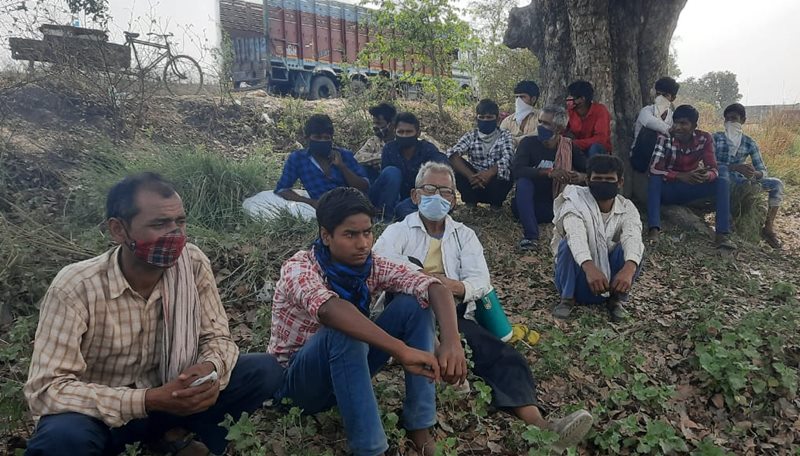Amid rising Omicron cases, India’s unemployment rate four-month high
India has recorded a high unemployment rate in the past four months amid the pandemic. Last month in December, the unemployment rate was highest in Haryana, Rajasthan, Jharkhand, Bihar, Jammu and Kashmir.


Over 112 million people in India have demanded work in the year 2021-22. Photo: Gaon Connection
The unemployment rate in India has hit a four-month high of 7.91 per cent in December as compared to seven per cent and 7.75 per cent in November and October 2021, shows the latest data by the Centre for Monitoring India Economy (CMIE).
The Mumbai-based business information company stated in its report that the urban unemployment rate rose from 8.21 per cent to 9.3 per cent, rural unemployment rose from 6.44 per cent to 7.28 per cent in the same period.
The unemployment rate is the number of persons not employed but willing to work and actively looking for a job as a per cent of the total labour force.
In the past year, unemployment in India was highest in the month of May 2021 when it rose to 11.84 per cent. It is to be noted that the economic activities in the country were badly hit owing to the second wave of COVID19 in the country.

With the economic recovery by November 2021 — when the unemployment rate in the country stood at seven per cent — the employment nationwide had improved to levels prior to the second wave of COVID19 in India but it witnessed a rise in unemployment again in December as unemployment increased to 7.91 per cent.
Also Read: Labour survey shows a decline in women’s share in workforce in the last 8 years
The statewise data shows the unemployment rate in the previous month of December was highest in Haryana at 34.1 per cent. It was followed by Rajasthan (27.1 per cent), Jharkhand (17.3 per cent), Bihar (16 per cent), Jammu and Kashmir (15 per cent). Poll-bound Uttar Pradesh and Punjab have recorded unemployment rates of 4.9 per cent and 6.8 per cent respectively.
In the pandemic years of 2020 and 2021, the livelihood of millions of people, especially the informal workforce, have been badly impacted by the restrictions imposed in order to curb the pandemic. Now, the Omicron threat and a possible third wave looms large.
According to the Union Ministry of Health & Family Welfare, India has detected 1,700 cases of Omicron, of which 639 have recovered or been discharged. Maharashtra topped the count with 510 Omicron cases, followed by Delhi with 351 cases.
More job seekers, low funds
During the COVID19 pandemic-affected years, about 112 million individuals in 2020 and 93.6 million in 2021 got work under the Mahatma Gandhi National Rural Employment Guarantee Scheme (MGNREGS). The central government’s scheme provides at least 100 days of employment to adult members of every household to provide livelihood security in rural areas.
On an average, an individual was given a daily wage of Rs 209 per day in the financial year 2021-22 while Rs 200 per day in the previous financial year of 2020-21.
As per the Ministry of Rural Development, over 112 million persons have demanded work in the year 2021-22. This is more than those provided with work (93 million) in the same period. This indicates there is a continuing demand for MGNREGA work in rural areas.
Interestingly, the central government has allocated Rs 730 billion for the Budget Estimate stage for MGNREGA for the 2021-22 fiscal year. This allocated budget is 34 per cent less than the revised estimate of Rs 1,115 billion for 2020-21 financial year.

